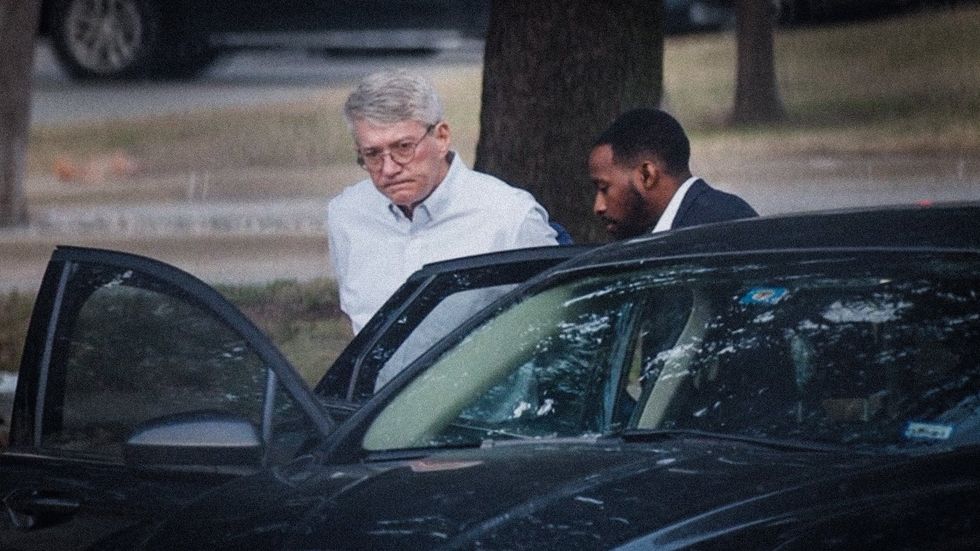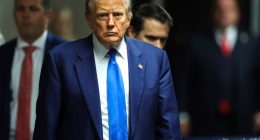
Blaze Media investigative journalist Steve Baker made an appearance on Friday before a U.S. magistrate judge in the North District of Texas in Dallas. The hearing was at 10:00 a.m., and its only purpose was to formally advise Baker that a federal criminal complaint was filed naming him as a defendant in the District of Columbia federal court, to confirm that he had legal counsel to represent him, and to place him under a series of court-imposed conditions that he must abide by while his case is pending.
This was what is known as an âout-of-district appearanceâ â an appearance in a federal court that is not the venue where the charges are pending. During my 21 years as a federal prosecutor with the Department of Justice, I participated in this same type of hearing hundreds of times. They are routine, they are simple, and they are generally short when the government is not seeking to keep the defendant in custody and have him transported by the United States Marshal to the district where the charges are pending.
We decided to remain cooperative. If what we feared might happen actually did happen, then it would be recorded for the country to see.
I was told ahead of time by the assistant U.S. attorney handling the case that the government would not be seeking Steveâs detention.
In my more than two decades as a prosecutor, I never was involved â not one time â in an initial appearance on misdemeanor charges where the defendant was told to report first to the FBI to be fingerprinted and photographed before going to the courthouse.
Yet those were the instructions I was given for Steveâs âsurrenderâ ahead of his initial appearance on the complaint that had been filed and signed by a federal judge in the District of Columbia. Before the Justice Department decided to charge him, I had a conversation with the prosecutor in mid-December. I asked to be advised if and when charges were filed and said that I would have Steve appear at the nearest federal courthouse for an initial appearance at a date and time he was told to do so. I wanted to avoid the scene of an FBI SWAT team making a forced entry into his residence at 6 a.m. to arrest him. The prosecutor agreed he would do so and that no SWAT arrest would be made.
Steve was required to show up at the FBI offices in Dallas at 7 a.m. The instructions were for him to wear shorts, a T-shirt, and footwear such as sandals or flip-flops â in 40-degree weather. That made me suspect that what was planned was exactly what ended up happening, but I could get no further explanation ahead of time.
Steve arrived at the designated time, but wearing a jacket, tie, and slacks. He never went inside the actual FBI office building but was instead met at the guard shack where visitors must check in before being escorted into the building. Two agents fingerprinted and photographed him, and then they did what I had suspected â they handcuffed him and put him in the back of an FBI vehicle for transport to the courthouse.
Steve was âarrested,â even though we had offered to have him appear voluntarily at the courthouse on a specified date and time for his initial appearance â the normal way the Justice Department has handled misdemeanor cases since I first started doing this work in 1992.
We considered disregarding the instructions and having him simply âsurrenderâ to the U.S. Marshalâs Office at the courthouse. That would have been the normal process. But we decided to remain cooperative and follow the governmentâs instructions. If what we feared might happen actually did happen, then it would be recorded for the country to see.
The government is not allowed to decide what press coverage it likes and what press coverage offends it and take prosecutorial action based on those judgments.
Before the appearance with the magistrate, because the FBI had âarrestedâ Steve, the U.S. Marshalâs Office and courthouse security added a belly chain, box cuffs, and leg shackles. That involves a chain around the waist, with handcuffs in the front attached to the chain so the defendant canât move his arms up and down or side to side. Another chain goes from the belly chain down to a chain attaching two ankle cuffs to each other. Shackled that way means all a defendant can do is shuffle his feet with security officers usually on both sides.
Ten minutes after the hearing ended, Steve walked out of the courthouse through the front doors like anyone else. He could have â and should have â walked into the courthouse the same way. Nothing justifies what Department of Justice put Steve Baker through on March 1. All for a journalist who spent 37 minutes inside the Capitol recording the events of January 6 as they unfolded.
The criminal complaint is dated February 21, 2024. It took 1,141 days for the Department of Justice to decide that a journalist covering an international news event was a legitimate target of a federal criminal prosecution.
The Justice Department had been threatening to take this step for more than two and a half years, ever since the FBI first contacted Steve and asked for him to sit for an interview in North Carolina. Eventually Steve did sit for that interview, answering their questions about his recollections of the day and his actions. Later he handed over all the video he had taken to the FBI and federal prosecutors.
It seems noteworthy that the Justice Department finally felt the need to take this step just weeks after Steve broke stories for Blaze Media about members of the U.S. Capitol Police who likely committed perjury during one or more January 6 trials. Steve also happens to be one of a very small number of journalists working closely with multiple House committees studying video evidence of the events of January 6 that has not yet been made public.
Our defense will make plain for the entire country to see that there were dozens of journalists â some working for media companies and others who were freelancers like Steve was at the time â who both were present on ârestricted groundsâ and went inside the Capitol in the same manner that has resulted in hundreds of protesters being prosecuted â through broken windows and doors. One in particular, a freelancer, had his lengthy story published in the New Yorker only nine days after and was later promoted for a Pulitzer Prize.
Heâs never been charged.
This has all the earmarks of âselective prosecution.â The government â foolishly in my view â noted in the affidavit in support of the criminal complaint that Steve made comments after January 6 that endorsed or supported the actions of protesters on that day.
That is political speech and has always been political speech, and the inclusion of that information gives away the game regarding the governmentâs motives in singling out Steve among the dozens of journalists who could be charged but have not been.
This case will not slip beneath the waves. The government is not allowed to decide what press coverage it likes and what press coverage offends it and take prosecutorial action based on those judgments.
The outpouring of support on Steveâs behalf has been tremendous. This includes the unwavering support of Blaze Media, which now employs him and has been aware for some time that this moment might eventually arrive.
Iâve played in this arena all my professional life. Game on.
Also Read More: World News | Entertainment News | Celebrity News






